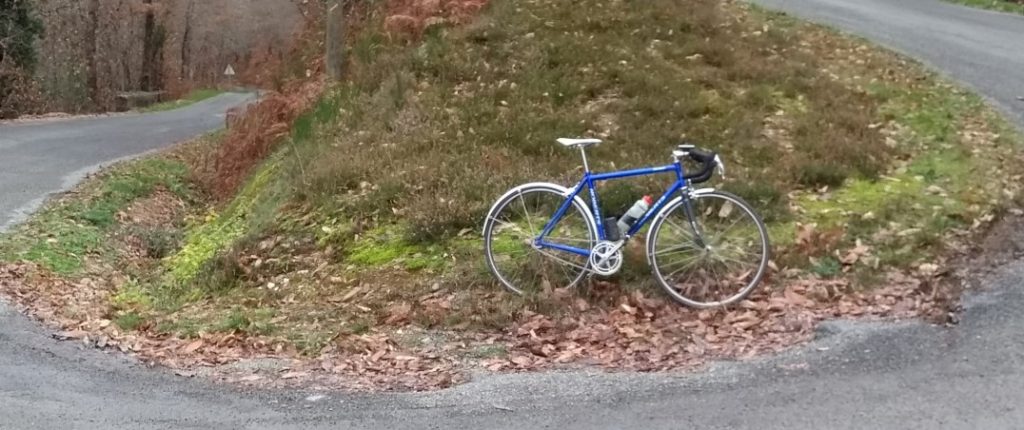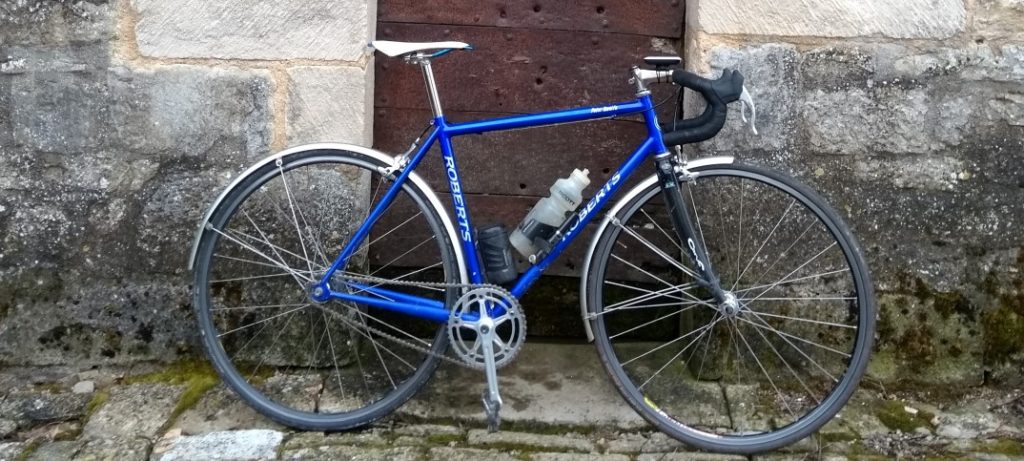If you follow us on Instagram, you’ll know I’ve been riding a fixed wheel a lot this winter. It might seem a bit mad in the hills around here, but mostly they’re not that steep and it’s a good work-out when I don’t have time to be out all day.
I’ve been riding a fixed wheel for a very long time, well before it became a fashionable urban transport option and I thought I’d say a bit about that – it’s a left-over from a part of British cycling culture which is disappearing and still has something useful to tell us.
It all started when I broke my rear mech as a kid messing around in the woods near school. I didn’t have any money to replace it so I went to a bike shop I used to hang out in with a plaintive look on my face. It was run by a very eccentric old guy in overalls and was piled high with old bike bits. Shops like that have long gone but there were still a few about back then. I hoped he’d rummage around and give me an old rear mech, but instead he gave me a vintage Villiers fixed sprocket and explained how to convert my bike. It was a bit weird riding a fixed for the first time, but I soon got used to it and was happy to be back on the road. At about the same time I’d joined a cycling club and had started racing. It was a real struggle for me keeping a racing bike on the road, so it made sense to use an old cheap-to-run bike for transport and winter training, and I quickly realised that my newly bodged up fixed wheel was perfect.
The old guys in my cycling club thought it was great that I was riding a fixed. They told me it was fantastic for developing my pedalling style and for strength on the hills. It was what they’d all done in their racing days. Looking back a lot of what they told me was nonsense. They saw no point in doing speed training and thought training over vast distances carrying bricks in a saddlebag was a good idea. The maddest thing they ever told me was that I wouldn’t have time to drink during a race, so I must train myself to manage without water (!). They had a point about the fixed though – to this day I have an unusually fluid pedalling style, learned from whirling the pedals around at 200rpm plus trying to keep up with my geared riding buddies.
As I got more into racing I decided to have a go at riding the track. It turned out I was better at that than any other form of racing I tried, so I stuck with it. Track bikes have a fixed, and back then most track riders used a fixed wheel through the winter for training, so my old winter bike was still getting used.
When I eventually stopped track racing I’d been riding a fixed wheel for so long it had become an important part of my cycling, so I carried on riding it in the winter. It makes some sense in an English winter when the roads are covered in salt and grime to have a bike with a simple transmission and full length mudguards (fenders).
When we moved to France I decided to sell my fixed bike because I thought the hills here would be too hard without gears. When it came to it, emigrating was so fraught I forgot all about it, and didn’t realise I’d still got it until it was unloaded from the removal truck. It languished in the shed for a while, but one day I decided to go for a ride and see how I got on. To my surprise it was fine. The hills here are bigger than I was used to in the UK but the gradients are much more gentle. I enjoy encountering French riders on the road. There’s no culture of riding a fixed here, apart from on the track and for urban hipsters, so they’re always astonished to see me whirling around on such an eccentric machine. Even the idea of having a winter bike with mudguards is alien to the local cycling culture – I don’t know anyone else who has one.
It’s still working for me. After all these years I really like riding a fixed for reasons it’s difficult to put my finger on. I often don’t have much time to ride and a hilly ride on a fixed is a fantastic workout in a short amount of time. I’m over-geared on the climbs which forces me to ride faster than I would on gears and is a great strength exercise. I can’t really be bothered to ride fast down the hills any more, but riding at a very high cadence sometimes is good for all cyclists. It also means riding my summer bike is something I look forward to every spring because I’m not using it all year round.
We’ve never had anyone come on a cycling holiday here with a fixed wheel but it would be possible. You’d need to bring your own bike and it would have to have brakes and a moderately sized gear for the hills. Get in touch if you’re up for it.

